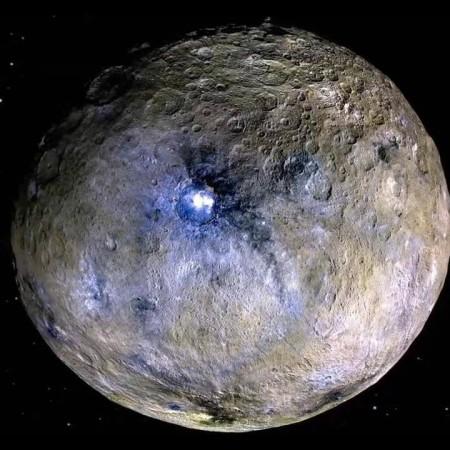
Dwarf planet Ceres is not a dead world as it was previously believed to be. Astronomers disclosed that NASA's Dawn spacecraft has sent images which show hundreds of bright regions that are clearly visible in the pictures.
These bright spots point towards the planet to be active and evolving.
"The mysterious bright spots on Ceres, which have captivated both the Dawn science team and the public, reveal evidence of Ceres' past subsurface ocean, and indicate that, far from being a dead world, Ceres is surprisingly active," Carol Raymond, deputy principal investigator of the Dawn mission, based at NASA's Jet Propulsion Laboratory in Pasadena, California, said in a statement.
ALSO READ: SETI to study mysterious interstellar asteroid Oumuamua for signs of alien life
"Geological processes created these bright areas and may still be changing the face of Ceres today," Raymond added.
On Tuesday, the latest results about the bright regions were presented by the researchers at the American Geophysical Union meeting in New Orleans.
ALSO READ: Orgasmic meditation: The latest creepy trend taking over New York
The Dawn spacecraft arrived in the orbit of Ceres in March 2015. The astronomers have discovered more than 300 luminous spots on the planet since then.
Ceres is the only dwarf planet located in the inner solar system, it is the largest celestial body present in the asteroid belt lying between Mars and Jupiter.
A latest study led by Nathan Stein, a doctoral researcher at California Institute of Technology, divided the bright spots of Ceres into four categories.
The bright spots belonging to the first category are the most reflective material on the dwarf planet and these spots are found on the crater floors.
The best examples of these are in the Occator Crater, which shelters two noteworthy luminous areas.
ALSO READ: Here's how you can heal love bites faster
The Cerealia Facula, in the centre of the crater, has the bright material covering a 10 kilometre wide pit, within which a small dome exists.
A collection of slightly less reflective and more diffuse features known as Vinalia Faculae is present in the east of the centre.
The luminous material present in the Occator Crater is made of salt-rich material, which was likely to be mixed in water once.
ALSO READ: Here are 5 bizarre accidents that took place during sex
More commonly, in the second category, luminous material is found on the rims of craters, streaking down toward the floors.
Separately, in the third category, bright material can be found in the material ejected when craters were formed, the study said.
As Dawn continues the final phase of its mission, in which it will descend to lower altitudes than ever before, astronomers hope to learn more about the origins of the bright material on Ceres and what gave rise to the enigmatic features in the Occator Crater.












!['Had denied Housefull franchise as they wanted me to wear a bikini': Tia Bajpai on turning down bold scripts [Exclusive]](https://data1.ibtimes.co.in/en/full/806605/had-denied-housefull-franchise-they-wanted-me-wear-bikini-tia-bajpai-turning-down-bold.png?w=220&h=138)
![Nayanthara and Dhanush ignore each other as they attend wedding amid feud over Nayanthara's Netflix documentary row [Watch]](https://data1.ibtimes.co.in/en/full/806599/nayanthara-dhanush-ignore-each-other-they-attend-wedding-amid-feud-over-nayantharas-netflix.jpg?w=220&h=138)



